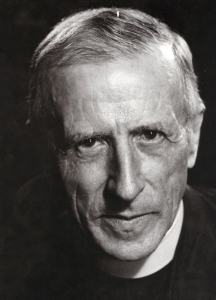
I know, I know, but let’s have a little fun. While the linguistics may be battered and bruised – cognate is not a verb – in this instance let’s suppose otherwise. Cognate (the adjective) means analogous in nature; of the same bloodline, specifically a female bloodline. Male archetypes, i.e. gods and demigods, would therefore arise from agnate bloodlines. We’ll return to these terms directly.
The purpose of this blog and several others to follow it is to explain how and why Chrysalis Tarot distinguishes itself from more traditional decks whose origins and schematics date to the turn of the 20th century when metaphysical worldviews were much different and far less sophisticated than today. For example, recall the days of the archaic “divine right” of kings, queens, emperors and empresses to rule; of the unquestionable spiritual authority of supreme religious leaders; of hocus pocus, spells and sundry other superstitious fiddle-faddle which, unfortunately, still pollute traditional tarotists and other metaphysical disciplines today.
 What is an archetype and how to they cognate? Well, an archetype, in 21st century metaphysical parlance, can be defined as an integrated, anthropomorphized emergence of information defined as attributes that exist concurrently in the brain and in what is known as the noosphere, a concept developed by the great philosopher Teilhard de Chardin (left), who often was called the Prophet of the Information Age. The noosphere itself is cognate with the Akashic Record, which also is known by many other names, e.g. Jung’s Collective Unconscious, aether, astral plane, Indra’s Net, etc. In Chrysalis we refer to it simply as the Otherworld.
What is an archetype and how to they cognate? Well, an archetype, in 21st century metaphysical parlance, can be defined as an integrated, anthropomorphized emergence of information defined as attributes that exist concurrently in the brain and in what is known as the noosphere, a concept developed by the great philosopher Teilhard de Chardin (left), who often was called the Prophet of the Information Age. The noosphere itself is cognate with the Akashic Record, which also is known by many other names, e.g. Jung’s Collective Unconscious, aether, astral plane, Indra’s Net, etc. In Chrysalis we refer to it simply as the Otherworld.
When you read using Chrysalis Tarot, you access a particular psychological construct located in the noosphere and also in your own consciousness. You do what shamans do: you access the astral plane, where the ones and zeros (the essence of all information) that comprise the eternal energy (consciousness) of your ancestors and archetypes exist. Gods and goddesses are archetypes; integrated information constructs. The more information the better.
What’s equally important is what you DON’T do. You do not access an objectified Divine Will or some other mystical source of preordained circumstance from which you have no escape. Such thinking epitomizes precisely the type of Sunday School spirituality Chrysalis Tarot seeks to debunk!

When archetypes cognate they evolve – they subsume and share attributes with other archetypes and grow in grace and knowledge. The consciousness of those individuals with whom they communicate, with whom they experience affinity, also evolves. Spirituality is fluid, not static, and cannot be codified. Codification of spirituality results in the entropy of spirituality, a.k.a. religion.
Throughout human history the most ubiquitous cultural archetypes have been the Great Mother Goddess and her cognates. Examples of her ethereal offspring are Aphrodite, Ariadne, Isis, Hathor, Mary of Nazareth, Diana, Gaia, Freyja, Quan Yin, Chehooit, Kali, Ma’at – the list goes on and on ad infinitum: the cognation of divinities is timeless.
Traditional tarot proceeds from a masculine, monotheistic, abnate mindset that is uncompromisingly dogmatic and authoritarian. Chrysalis Tarot, on the other hand, is unabashedly feminine, polytheistic, cognate, free and self-liberating. Chrysalis was created to empower its users as well as to actively assist them with spiritual growth – to help them better understand themselves and the true nature of reality.
© Toney Brooks, 2018, first in a series

Thanks Toney, for the clearer understanding and answers to some lingering questions.
Cari
LikeLike
My pleasure, Cari. I’ll continue this theme with several more pieces. Respond here if you (on anyone else) have any particular line of inquiry you’d like me to address.
LikeLike